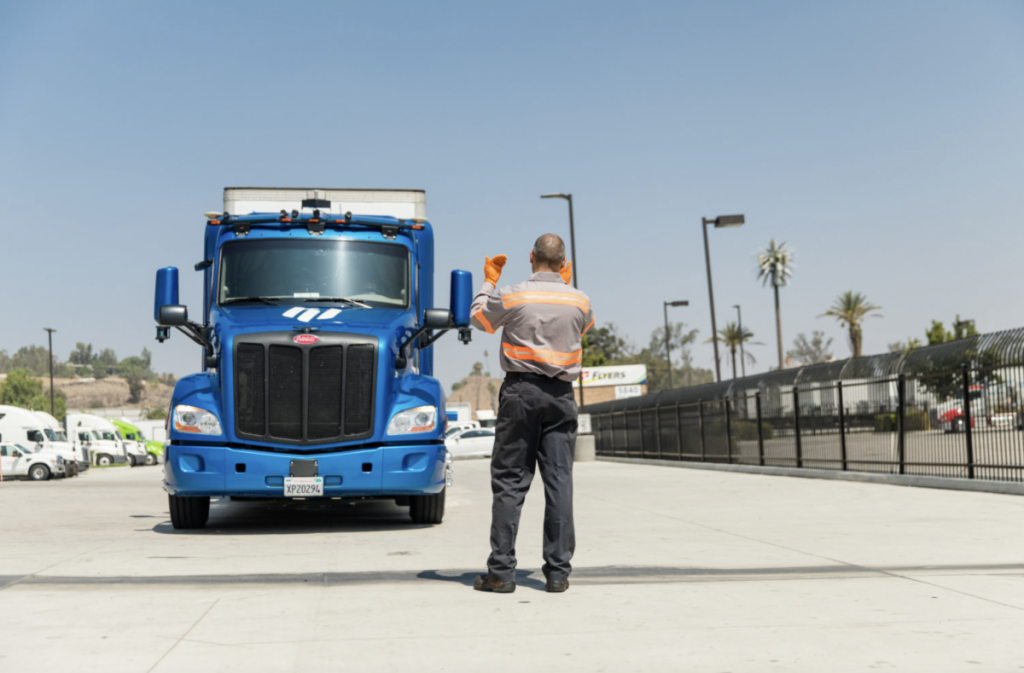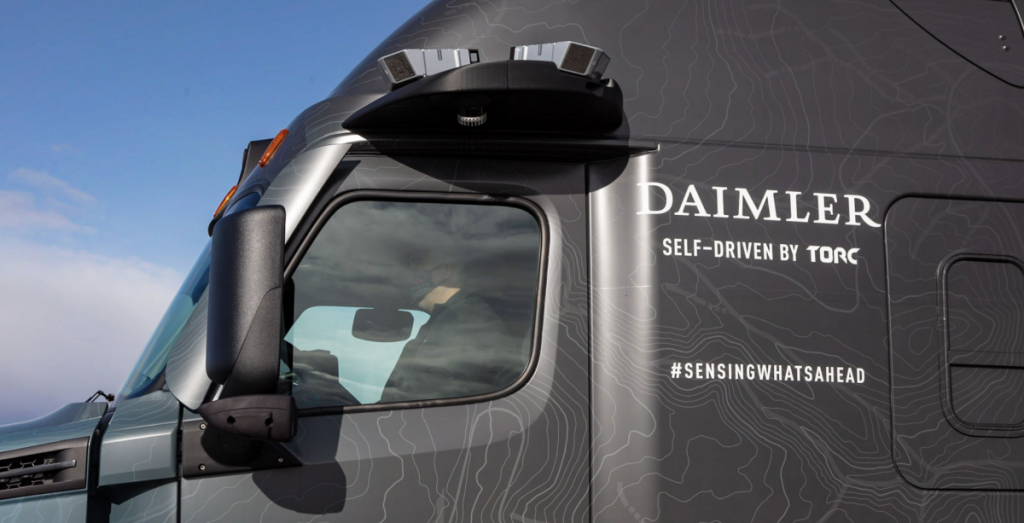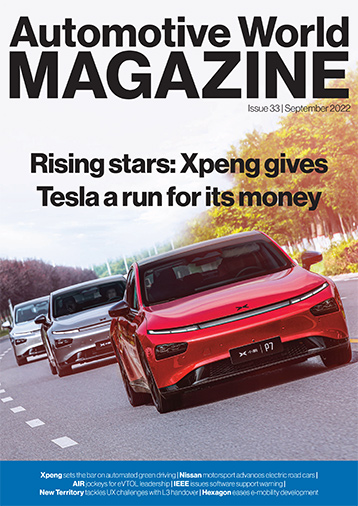Autonomous driving is on the cusp of a technological frontier, promising numerous benefits across several different use cases. For the trucking sector, it could offer dramatically more efficient and safer freight movement. But as with many new technologies, regulations could make or break its success. In the US, arguably the leading market in terms of self-driving truck pilots, there is a decided lack of federal regulations across the states.
Today, autonomous trucks can run in specific areas within 29 states, but each state has its own approach and its own rulebook. The rules that apply in one state may not be the same rules that apply when the vehicle crosses the border. Such a fragmented strategy has some industry watchers concerned, particularly on the legal ramifications. For new players entering the sector, or established players keen to extend their roadmap, navigating the complex legal requirements may require outside help.
That’s where Justin Savage and Allison In come in. They are part of the Automotive and Mobility sector team at law firm Sidley Austin LLP, advising companies and organisations on the autonomous driving requirements for any state in which they operate, the risks they may face under the US law and management techniques to mitigate those risks.
“Some states may require a permit to test on the roads. On top of that there are reporting obligations for the National Highway Traffic Safety Administration (NHTSA),” notes Savage. “A new market entrant might be looking for high level advice on risk management. Other clients may need guidance on how a NHTSA regulation works for AVs or advanced driver assistance systems (ADAS), or how to deal with an open enquiry or investigation from NHTSA.”

In the absence of a federal approach, the risk of getting it wrong could be significant. Allison In views the biggest safety-related liability concern around the question of who takes responsibility in the event of a crash, particularly one involving a fatality. “Here we have many different requirements based on different case law and the regulations that are written in different states,” she tells Automotive World. “That includes California, which keeps changing its view on who’s liable and which type of technology is subject to the regulations.”
The Sidley team fields questions on all forms of autonomous driving, but freight is a particularly complex sector.
Autonomous freight
Regulatory concerns for autonomous freight, as opposed to autonomous passenger vehicles, have an added layer of complexity. In the US, there is a federal statute called the Federal Aviation Administration Authorisation Act (FAAAA) that essentially prohibits states and local governments from regulating the rates, routes or services of any freight forwarder or broker, or anything having to do with a price, route or service of a motor carrier. “This is a broad federal pre-emption statute that overlays freight shipments,” explains Savage. There has not yet been a case applying that statute to ADAS or autonomous driving technologies, but he flags it as an interesting aspect to watch.
Notably, there’s an exception in the statute for the safety regulatory authority of states. Recently, the Ninth Circuit in Miller v. C.H. Robinson Worldwide held that the safety exception did apply to a negligence claim against a freight broker for failing to select a competent motor carrier. There, the Ninth Circuit panel noted the congressional intent to preserve the states’ broad power over safety in enacting that exception, which includes “the ability to regulate conduct not only through legislative and administrative enactments, but also through common-law damages awards.” As a result, the negligence claim was remanded to the trial court to proceed as filed. The US Supreme Court denied the broker’s petition for rehearing on 27 June 2022.
Having a potential patchwork of state product liability laws might be counterproductive to the development of new ADAS and AV technologies
So how does that framework apply to AV or ADAS? Savage simply suggests that it at least gives companies another argument to push back against state product liability suits. “There’s a recognition within the industry that having a potential patchwork of state product liability laws might be counterproductive to the development of new ADAS and AV technologies,” he tells Automotive World.
The SELF DRIVE Act
The SELF DRIVE Act, originally introduced in 2017, could provide some guidance if it is ever put into force. It calls for the establishment of a federal, uniform regulatory safety framework for self-driving vehicles. “It would be a good idea to balance safety and technological development by having a single standard,” says Savage. “There is some pre-emption case law out there under the Motor Vehicle Safety Act and the Federal Motor Vehicle Safety Standards but it’s less clear than what the SELF DRIVE Act would provide.”
However, five years later, developments remain sluggish. “Every calendar or congressional year it’s been reintroduced, and it was sometimes renamed as something else, but it is still not gathering the widespread support we saw when it was introduced back in 2017,” In points out, suggesting this is due to an element of reticence on the part of the government. “NHTSA has been passively but intentionally holding back on issuing something really progressive,” she adds.
“At a high level, not much gets done in Washington DC these days,” quips Savage. “It’s a stereotype that unfortunately has some force behind it.”
Good advice
When looking at liability issues for self-driving, developers and operators need to be aware of the requirements for all regions in which they are running vehicles. As mentioned previously, some states require permits in order to operate AVs. The Society of Automotive Engineers puts out constantly evolving standards governing these new technologies, serving as a touchpoint for developers. Savage also urges the importance of transparency and establishing a relationship with state regulators so that there is a clear understanding of what a company is trying to do from both a compliance and safety perspective.

There’s also an educational role for companies, helping policymakers understand the benefits of these technologies and ideally providing greater certainty. But what happens if an autonomous truck crashes today? Savage recommends companies take certain steps right away. The first is to determine whether or not the self-driving technologies played a role in the crash. It could be that the truck was sideswiped by another vehicle and the self-driving system had nothing to do with the incident. Second, companies want to have an engineering team conduct a robust root cause analysis into the causal factors that led to the crash. If there was an indication that ADAS or AV played a role, then the company would want to identify the risk-mitigants that it has in place, such as the specific tiers of insurance—primary, excess—and the commercial agreements between the supplier and the OEM or between other parties that stand behind the technology.
Sometimes a body like NHTSA or the National Transportation Safety Board (NTSB) will become involved in an investigation, and there are several such probes ongoing at the moment. In these cases, the companies involved also need a strategy for engaging in a transparent and robust way. “That needs to be based on the data, and [companies] must keep in mind the different precedents that might be set when regulators engage in that type of an investigation,” elaborates Savage.
Risk-spreading
Some help for the burgeoning AV freight industry could be found in traditional risk-spreading measures, like insurance. Freight carriers, automakers, suppliers—everyone tends to use insurance. “There can also be commercial risk-spreading between different entities in the supply chains for an AV or an ADAS, whether those are indemnities, assumptions of liabilities or other contractual agreements about who will allocate and bear risks as between those parties,” notes Savage.
Other popular options are joint ventures and corporate venture investments. These are particularly helpful in controlling the risks of the capital investments for technologies that may not have a reasonable payback period in the traditional corporate sense.
NHTSA has been passively but intentionally holding back on issuing something really progressive
Approaches like these will remain pivotal in the absence of a unified strategy, but there are signs that the regulators are preparing in some ways. In points to the recent developments with the Federal Motor Vehicle Safety Standards, which clarify applications to AVs and ADAS technology. “These changes suggest they are clarifying their definitions and streamlining the pathways for new regulations to come in and be consistent with whatever is existing for conventional vehicles,” she notes.
For instance, the regulations have moved away from definitions such as the ‘driver’s seat’ and instead referring to the seating position, either front or rear. “There are certain provisions in the standards that are not applicable to AVs, and could be confusing in the future,” notes In. “The agency is trying to eliminate those confusions in advance, even though they are not in the position of formulating some more aggressive and proactive regulations and standards for these technologies.”
At the end of the day, the US embraces its federalist system, in which there is a significant degree of autonomy in the individual states. But that same approach, in this instance, may serve as an inhibiting factor in the development and deployment of these technologies, at least as compared to other countries where there’s a more centralised standard. “There is this technological race underway,” says Savage. “We now need to ask, with these current parameters, how do we get there?”





